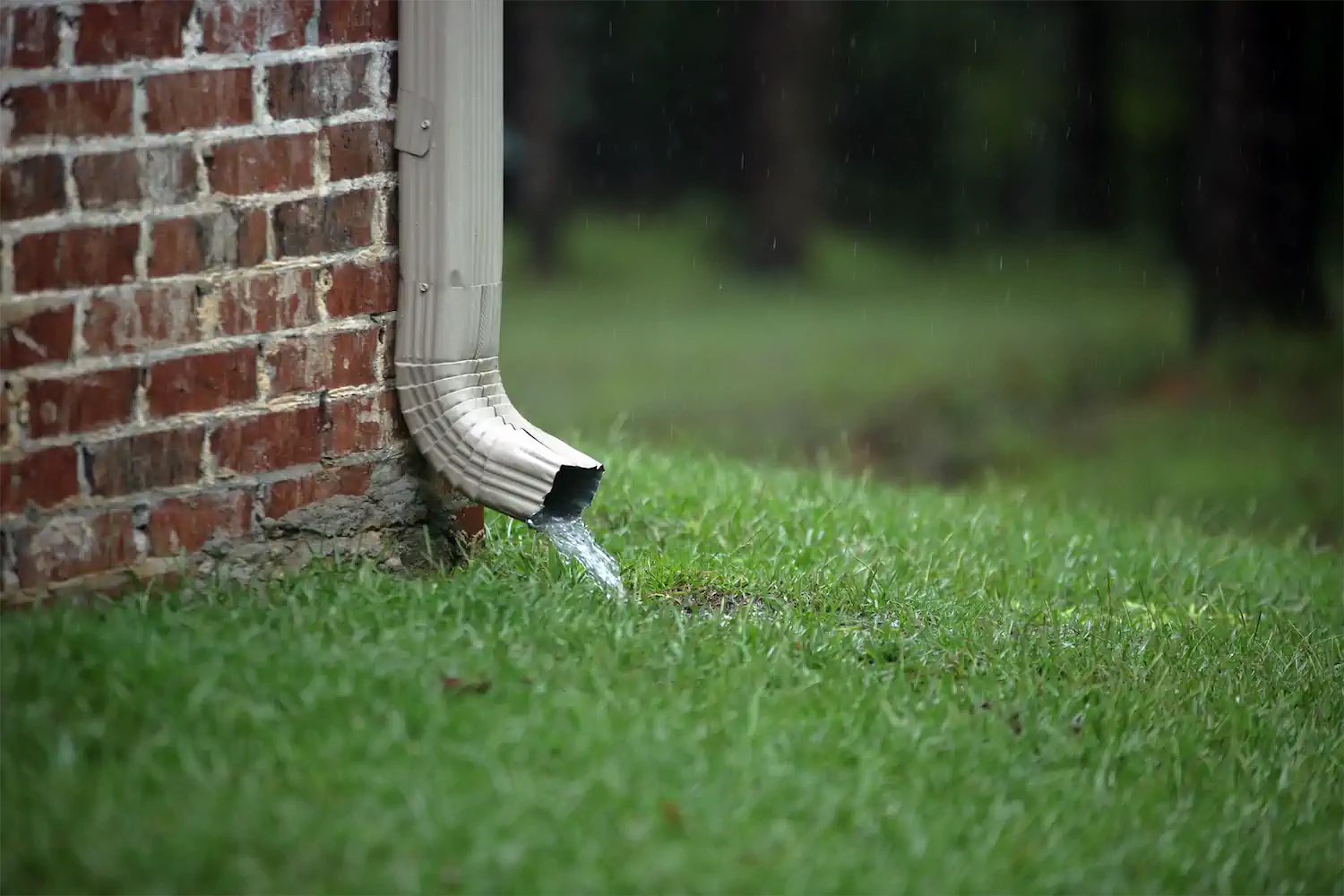A working downspout is a vital part of any building’s gutter system. In brief, the downspout transports water from the roof to the ground in a controlled manner.
Why is this so important? Learn why you should ensure your gutter and downspouts function correctly below.
What Is a Downspout?
When rain, snow, or other precipitation lands on a sloped roof, it generally flows down into the gutters. Gutters typically run along the edges of the roof and often have several downspouts connected to them. A downspout is a vertical pipe that directs water from the gutters to a drainage point on the ground.
Without gutters, water would flow off the top of a building, leading to a range of potential problems and drenching anyone walking below. Without downspouts, water wouldn’t be able to leave the gutters; it would either overflow, and thus negate the gutter’s purpose, or sit and stagnate until it could fully evaporate.
Broken or inefficient gutters or downspouts can cause damage to the home or landscaping. A faulty or inadequate home drainage system can also negatively affect the value of a property.
Why Effective Gutters and Downspouts Are Vital
Functioning downspouts help protect all parts of your home’s exterior and prevent water damage.
1. Protecting Your Home’s Roof
If water pools on your roof, it can seep through the roof and cause hazardous mold and mildew growth. It can also damage the roof, resulting in more frequent and more costly repairs, and even affect the structural soundness of your home. However, an effective drainage system can extend the life of your roof.
2. Protecting Your Home’s Foundations
At the bottom of the home, functional downspouts protect the foundations and prevent flooding in the basement. Downspouts may have a curved extension at the bottom to divert water away from the bottom of the home, often to a storm drain, soakaway pit, or water barrel. Some homeowners have a hose leading from the downspout to move water farther from the home.
If water pools next to a building’s foundations, it can affect the structural integrity and weaken the building. Additionally, water can seep through the walls and cause flooding in lower parts of the home, which can be costly as well as inconvenient.
3. Preventing Water Damage
If water isn’t diverted appropriately, it can cause flooding and damage to your garden and yard, potentially ruining flower beds and landscaping. Soil erosion, rotting tree roots, and damaged paving are other possible concerns.
When gutters and downspouts don’t function correctly or aren’t installed properly, water can get underneath the siding. This can cause rot and other damage, discoloration, and mold or fungi growth. You may also notice an unpleasant smell and a more frequent triggering of allergies.
Potential Problems With Downspouts
Assuming a home has correctly installed downspouts, common problems include blockages in the gutters or downspouts and breaks within the drainage system. Some homes don’t have enough downspouts to manage the usual volume of rainwater while others may experience problems in heavy rains. Water can back up and overflow from the gutters. It’s important to have enough downspouts, promptly repair any cracks or damage, and regularly check for debris and blockages.
Is it time to replace your gutters and downspouts? Contact Thomson Creek’s expert team for a free estimate.


